Reading feeds a curious mind and fills colors to a child’s life. It opens doors to a whole new world while giving people the chance to have a better understanding of reality. However, learning how to read is not as easy as 1 2 3. It takes patience and perseverance to get the undivided attention of your child as you teach them how to pronounce and understand the words that makeup sentences and stories. Help your kids practice reading with the reading worksheets we have compiled on this page.
Free and Printable Reading Worksheets
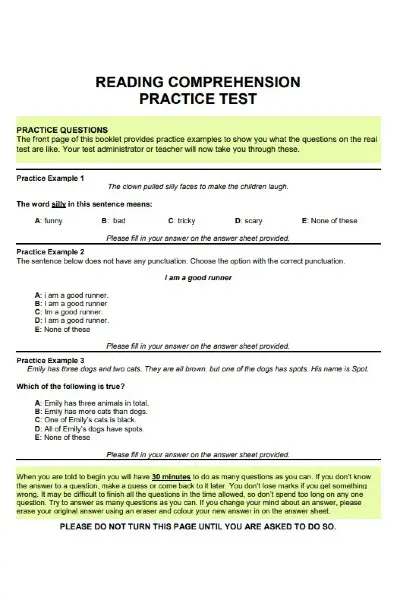
source: education.vic.gov.au
Remember, reading is not only about knowing how to pronounce words written on a sheet. One must also learn how to comprehend such text for it to make sense and for the information to be useful. This reading comprehension practice test template helps parents teach their children the basics of the English language. This 14-paged worksheet covers important topics like the proper use of punctuation, using context clues, and comprehending passages. It’s free! Get yours now!
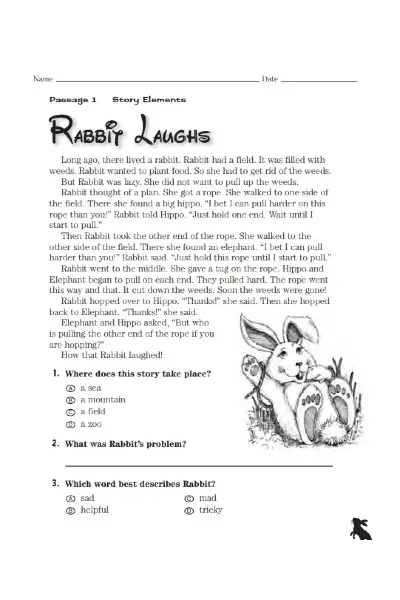
source: hempsteadschools.org
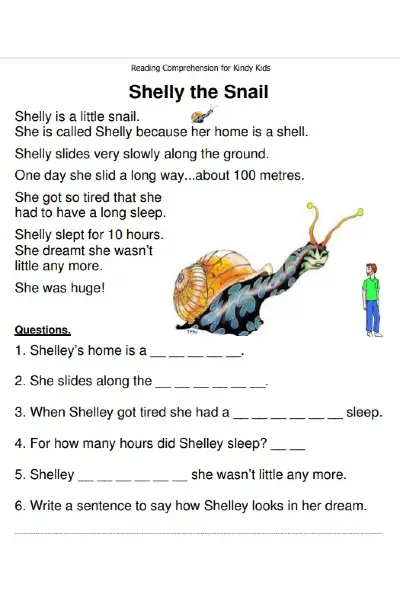
source: australianteacher.files.wordpress.com
When you want to teach your little ones to read, start them young! If you’re looking for resources to help you with that, download this fun reading comprehension worksheet, specifically tailored for kids in kindergarten, aged 4 to 6 years. This document includes a series of stories followed by questions to test the comprehension of the readers. You may read the passages to your child or let them read them aloud for you. Download yours for free!
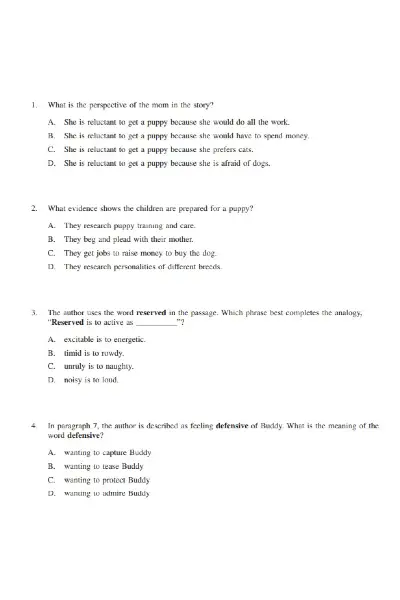
source: education.ne.gov
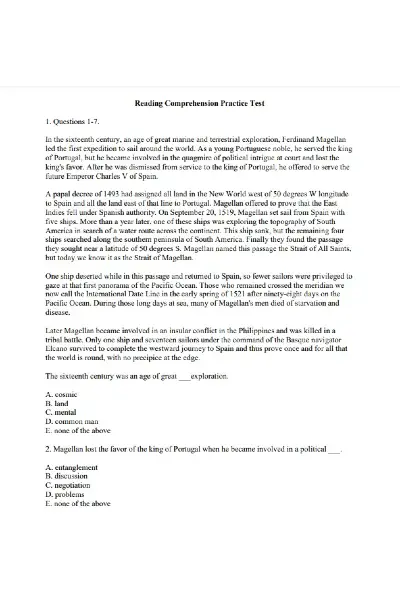
source: mcckc.edu
Getting your child ready to go back to school? Download your copy of this reading comprehension practice test to help your children assess their reading and understanding skills. This worksheet comes with formal essays and passages from textbooks. After reading, there will then be an assessment of the reader’s comprehension. The last part of this material also includes a guide on improving an individual’s reading comprehension. What else could you ask for? Download now.
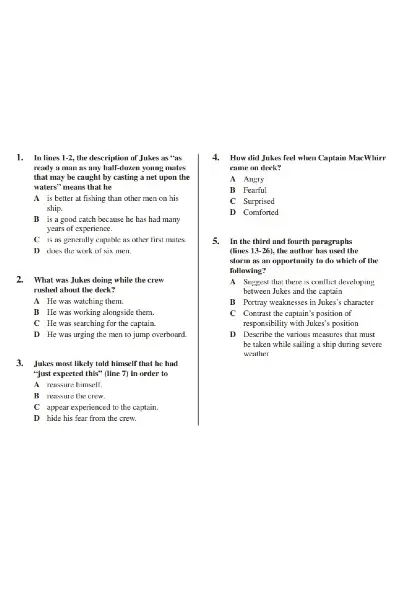
source: hiset.ets.org
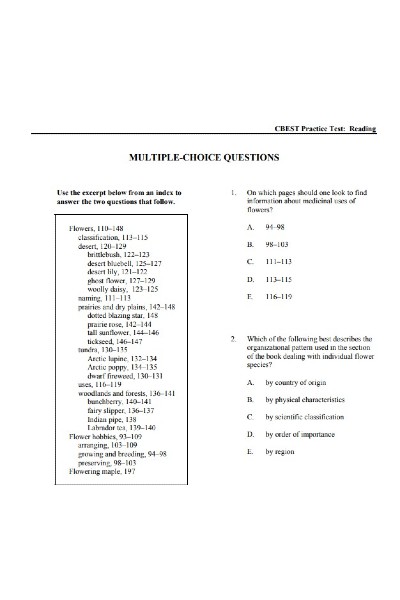
source: ctcexams.nesinc.com
Reading and comprehension go hand in hand. If your child needs help in developing such skills, then secure a copy of this reading practice test template. This worksheet is divided into various sections, which will help users analyze different text and graphs. You can download the document in PDF file format for free. Click download now!
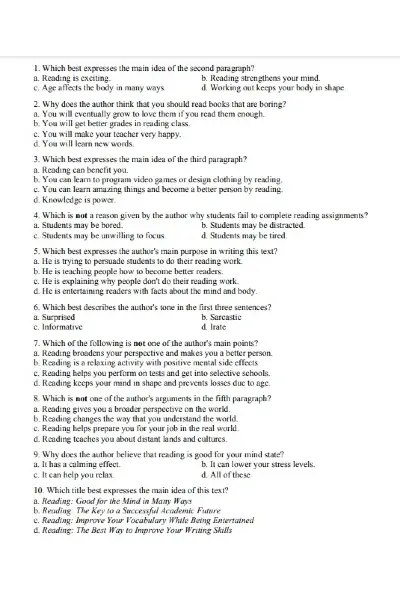
source: content.schoolinsites.com
Tips and Tricks to Make Your Children Love Reading
For some who don’t appreciate the beauty of reading, doing such an activity bores them to sleep. Plus, technological innovation draws more children to watch movies and play games on the internet than to read books and other print materials. Regardless, figures from Statista showed that 72% of adults in the United States had read at least one book over the past year from the date of the survey in 2018. Consumers in the country also spent an average of $92.00 on reading last 2019. So why do these people read? For pleasure.
Don’t wait until your children become old before you persuade them to read. You can start right now! Whether you want your child to be interested in reading for pleasure or learning, here are several ways to encourage them to love such an activity:
1. Find the Right Book
Aside from choosing a story where your child can gain substantial insights, it is also imperative to select a book that will best suit their age. Make sure that the books or other materials you provide them with aren’t too hard or too easy for them. If your child is still two-years-old, you can get them those lovely picture books that you can read to them at bedtime. There are also reading worksheets for preschoolers made available on the Internet, which you can use to teach beginners how to read.
Moreover, letting your child choose what type of books they want will make this task a lot easier for you. If they want to read comic books, let them. Remember, your goal is to make them love reading. And this starts with the right reading material.
2. Bring Books to Life
Although most children’s books are fictitious, you can find a way to incorporate the story into real-life scenarios. Say, for example, you’re reading The Adventures of Pinocchio. You can use this tale to instill in your children’s minds that not telling the truth has its consequences, and it is not necessarily the growth of one’s nose.
Another way to let your child enjoy reading is to engage in an activity with them. So, if the story is about dragons, you can teach them how to build a Lego dragon. This way, their imaginations will create a more interesting world of dragons.
3. Play Word Games
Playing word games enhances a child’s writing and spelling abilities. Most importantly, it helps expand their vocabulary. After reading a fairy tale with your child, check if they have retained any familiar and unfamiliar words in their minds. You can create a word scramble based on the terms used in the story and have your child answer it. And if you and your child have been following the magical adventures of Harry Potter, these Harry Potter word search printables are for you!
4. Try Audiobooks
Nowadays, most physical books have a corresponding audiobook. This material helps develop the listening skills of a child. Not just that, it increases their reading speed, helps them pronounce words correctly, and improves their fluency in the language. So if your child prefers to listen to audiobooks, switch them with paperbacks every now and then.
5. Read and Reread
Sometimes, children want to hear or read a story over and over again, and it’s fine. When they know what is going to happen because they have heard the same story before, it is easier for them to learn new words. For your little ones, it is best to read stories with lines that rhyme. Doing so allows them to follow through the lines. So when they hear the same words over again, they will eventually join you in reading.
Remember that no matter how old or young you are, reading can be fun!



